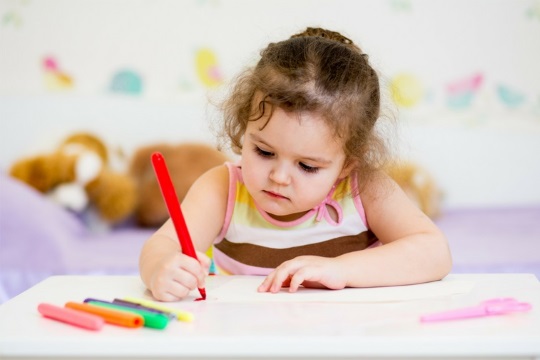

Do you remember how you learned to spell? Probably not. Did you first learn the alphabet, then learn to “sound out” words? Did you start with “invented spelling”? Did you learn easily, or do you still have some trouble spelling certain words? Do you know how to help your child with some first spelling?
Teachers start teaching children how to spell by listening to beginning and ending sounds, which are really pretty abstract concepts. (see 7 Ways of Teaching Your Child to Spell) Your child has to be ready, though, to associate specific “drawings” (letters) with sounds in order for this process to have meaning. But much of the awareness of spelling begins before a child understands that letters “make sounds.”

There is a sequence for the development of spelling that has been documented in many studies, and it begins with this awareness. Has your child begun to spell some words? Do these stages seem familiar to you?
By knowing these stages of spelling development, you will be able to help your child move from where he or she is to the next level. Teachers will certainly be teaching the “basics,” but you can give your child a great head start.
You can begin to teach your child the way most preschool teachers do. They will most likely teach the alphabet, have a “word of the day” beginning with the letter they are teaching, point out words by “sounding them out,” and use other such strategies to teach sound/letter correspondence. Teachers of young children encourage them to spell words the way they sound in order for the child to be able to pair writing with speaking: if she can say it, she can write it. This type of early spelling is often referred to as “invented spelling,” but it might also be called transitional or temporary spelling. Children should know that this is beginning spelling, that it is a good start (real spelling is not reinvented by each person), and that they will get better at it as they are taught the adult way.
So the development of spelling can be observed in stages, from a type of representational drawing, to the printing of letters, to understanding sequences, to relating word pronunciation with letters. It is important for parents and teachers to watch how children are learning to spell. What stage is the child demonstrating? How can you help her to move to the next stage? Is he leaving out some letters and sounds? Can you pronounce the words slowly and clearly so he can hear the sequences? Can you show her how to write some 3-letter words as you say them? Can you show him how many sounds are in the words by counting on your fingers? Think of as many ways as you can for leading your child to the next stage. And after stage 7, your child will truly be a writer!